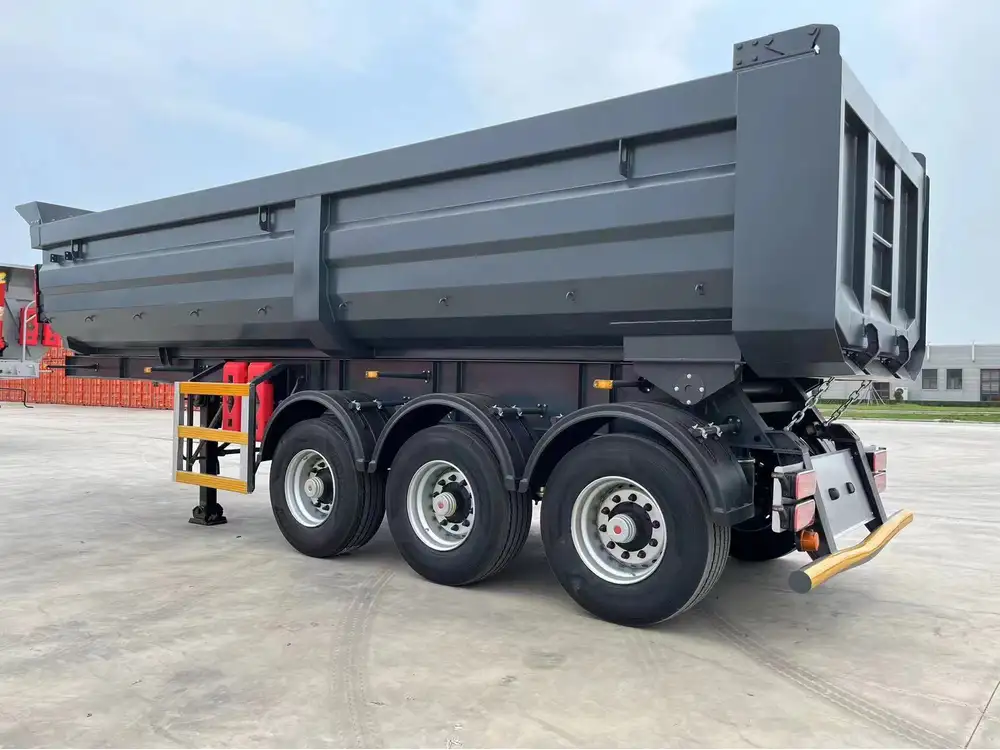When it comes to the functionality of semi-trailers, understanding the intricacies of their gear systems is crucial. This comprehensive guide will delve into the variety of gears a semi-trailer may utilize, how these gears operate, the impact they have on performance, and considerations for manufacturers and users alike. Let’s explore these elements intellectually and systematically.
How Many Gears Does a Semi-Trailer Have?
The Basics of Gear Systems
The gearing systems within semi-trailers are not directly associated with the trailer itself, but rather with the tractor unit that tows the trailer. Semi-trailers often utilize the tractor’s transmission system to achieve desired performance levels. Therefore, when discussing the number of gears a semi-trailer has, we are principally referring to the tractor unit’s transmission, which can vary based on the type of vehicle and its specific design.

Common Gear Configurations in Semi-Trailers
Standard Manual Transmissions:
- Typically feature 10 to 18 gears.
- Advantages: Greater control and efficiency during different driving conditions.
- Use Case: Preferred in freight transport where driver skill can optimize engine performance.
Automated Manual Transmissions (AMTs):
- Generally designed with 12 to 16 gears.
- Advantages: Reduce driver fatigue by automating gear shifts; provide fuel efficiency comparable to manual systems.
- Use Case: Gaining popularity among fleet operators for long-haul transport due to ease of use.
Dual-Clutch Systems:
- Particularly advanced transmissions that can have 7 to 10 gears, but with rapid shifting capabilities.
- Advantages: Provide smoother acceleration and deceleration, enhancing overall drivability.
- Use Case: Used in specialized vehicles where performance and driver comfort are paramount.
Transmission Gear Ratios Explained
Gear ratios are a pivotal aspect of understanding how many gears are effectively in operation. Gear ratios determine how much torque is transferred to the wheels from the engine and can greatly influence fuel efficiency, acceleration, and overall vehicle performance.
High Gear Ratios: Typically used for high-speed travel, providing better fuel efficiency on highways. These would correspond to the higher gears in a transmission.
Low Gear Ratios: Allow for greater power at lower speeds, ideal for hauling heavy loads, such as in urban environments or when ascending.
Key Performance Considerations of Gearing Systems

1. Load Capacity and Gear Selection
A vehicle’s ability to handle loads efficiently is influenced by its gearing arrangement. Operators need to assess the load they will transport to select the appropriate gear system. Heavier loads demand lower gears for sufficient torque.
2. Terrain and Driving Conditions
The choice of gear configuration must also take into account the expected driving conditions. Hilly terrains may necessitate lower gear ratios to enhance torque, whereas flat surfaces benefit from higher gears to maximize fuel efficiency.
3. Engine Size and Power
The semi-trailer tractor’s engine size plays an important role in determining a suitable gear range. A larger engine typically handles higher gear ratios well, balancing power with fuel efficiency. Conversely, smaller engines may struggle with higher ratios under heavy loads.

Pros and Cons of Gear Options
| Gear Type | Pros | Cons |
|---|---|---|
| Manual Transmission | Improved control, driver engagement | Requires skilled drivers; potential fatigue |
| AMTs | Simplicity; reduces driver fatigue | Slightly higher repair costs |
| Dual-Clutch | Smoother shifting; fast acceleration | Complexity in system design |
Understanding Gear Maintenance for Longevity
Just like any mechanical component, the gear systems in semi-trailers require regular maintenance to ensure optimal performance and longevity. Some fundamental maintenance practices include:
- Regular Fluid Checks: Ensure that transmission fluids are topped up and clean.
- Scheduled Inspections: Carry out routine checks on gear systems to identify potential wear and tear.
- Proper Use of Gears: Educate drivers on the correct usage of gears, minimizing unnecessary stress on the system.
Conclusion
The number of gears a semi-trailer utilizes is intrinsically linked to its coupled tractor unit’s transmission system. A comprehensive understanding of how these gears operate, their configurations, and implications on performance is essential for manufacturers and operators in the logistics sector. Ensuring proper care and attention to these mechanical systems will not only enhance operational efficiency but also contribute to safety and reliability on the road.
By taking into account the factors and insights presented in this article, those involved in the industry can make informed decisions regarding their semi-trailer gear systems—ultimately leading to improved vehicle performance, safer operations, and higher profits in the long haul. Through careful consideration of gear systems, future advancements in semi-trailer technology can be fostered, paving the way for even more robust, efficient, and user-friendly transportation solutions.



